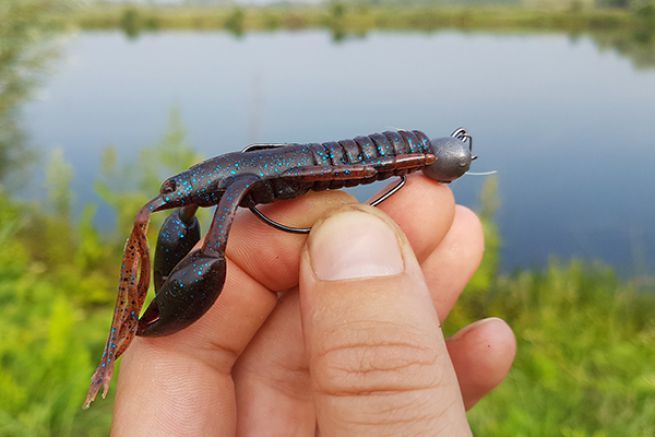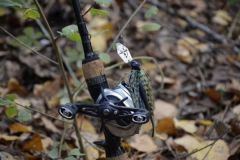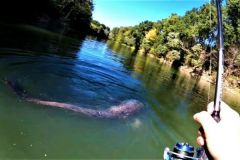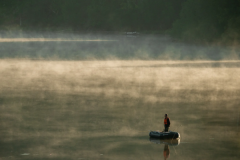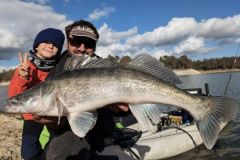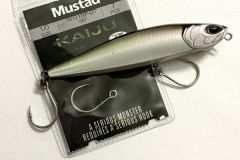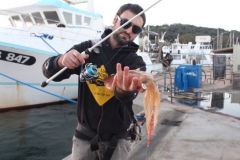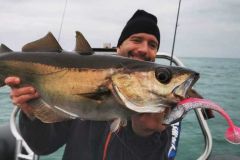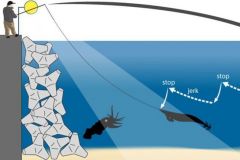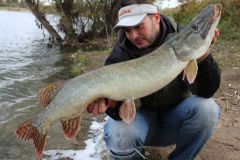A prized prey
The crayfish imitation is a very common lure on the American continent, it is a great classic for black bass fishing. In France, this type of soft lure is less popular than the swimbait or the grub (comma). However, walking along the banks of our lakes and rivers, we notice that the crayfish is well established on the territory. The endemic species are discreet, but the exogenous ones, such as the American crayfish, have colonized the environment.
The flesh of this mollusc, not only pleases the fricassee lovers, it is a very appreciated prey for pikes, perches, pike-perches, black-bass, catfish and even carps! So why not tempt them with an imitation?
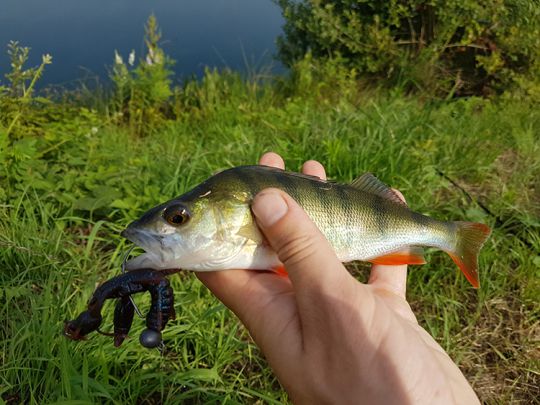
Small perch caught with a Savage Gear crayfish on the bottom
Crayfish imitations
These lures are well known for black bass fishing, but the offer has become more democratic in recent years. There are more and more choices at the retailers. To put it simply, there are realistic imitations, like the Savage Gear "3D Crayfish", others like the Yum Craw Chunk are more basic but their swimming action is very attractive. But there is no need to have fifty different models, two or three sure values of different sizes are enough. For the color, I always prefer what is most natural, so I play with different shades of red, sometimes orange or purple.
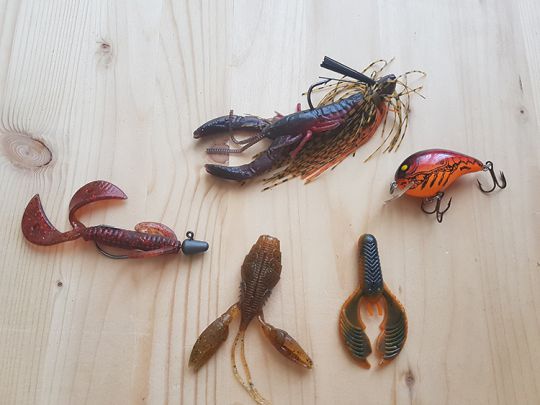
A small sample of the different immitations of crayfish, we even find the pattern on some swimming fish like this cranck.
Technique and animations
Crayfish move mostly in reverse, especially when in danger, so we arm our imitations by the tail, with the head back like a real one. On this type of lure, the claws undulate and produce strong vibrations in the water.
You can use it in different ways, for my part I like to rig them with a soccer lead head with a Texas hook or trailer on a rubbers jig (lead head with a silicone skirt) or on a chatterbait (bib lead head with a plastic skirt). The shape of the jig head is important, a flat surface allows the lure to stay in a vertical position on the bottom, with the claws undulating. Drop-shot rigs (hook over lead) and Carolina rigs (ball lead and Texas hook) also work well with this type of lure.
When observing crayfish on the banks, we can see that they are most of the time foraging and moving on the bottom to look for food. It is therefore an appropriate lure to look for fishes on the bottom.
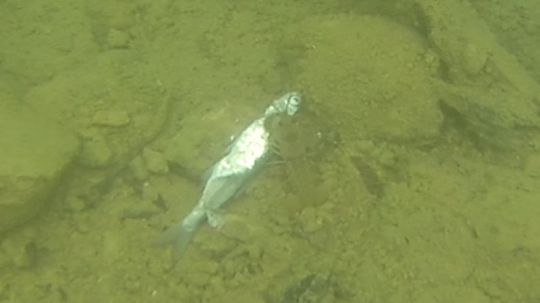
A crayfish breaking the crust on the bottom
When a crayfish is attacked, it propels itself with its tail to leap backwards and flee quickly, but it is not very enduring, these few jumps are used to go and hide further away.
I have this pattern in mind, when I fish with a crayfish, I fish very slowly, scraping the bottom, I make a few stops, I move my craw with light strokes of the rod high or very slowly with the reel. From time to time I use a dryer tip or a few turns of the reel to get my lure off the bottom like a crawfish on the run.
Most of the time, the bites happen when the lure is coming down! It also happens that the fish picks up the imitation on the bottom. It is an effective technique when it is about fishing to scratch and to stand out on the sectors where the fishing pressure is important!
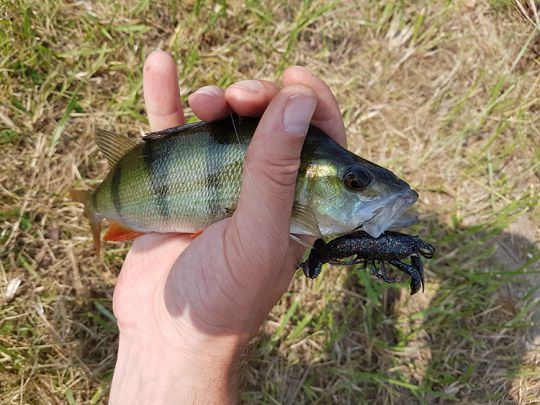
A small zebra found in a herbarium

 /
/ 